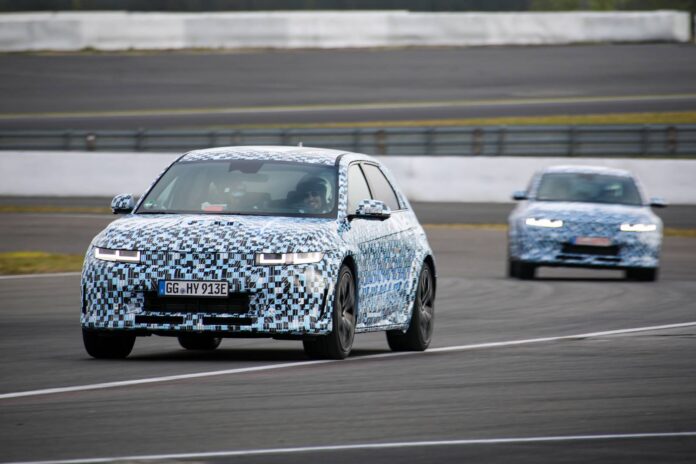Hyundai N, the performance brand of the Korean carmaker, has almost completed endurance testing of the IONIQ 5 N, its first all-electric model. Prototypes have been run at Nurburgring racing circuit in Germany, which is also part of Hyundai Motor’s R&D network in Europe.
The IONIQ 5 N, to make its world debut at the Goodwood Festival of Speed next month, has been pushed to its limits around the track, covering 10,000 kms in the first phase and now going through a second 10,000 kms of durability testing.
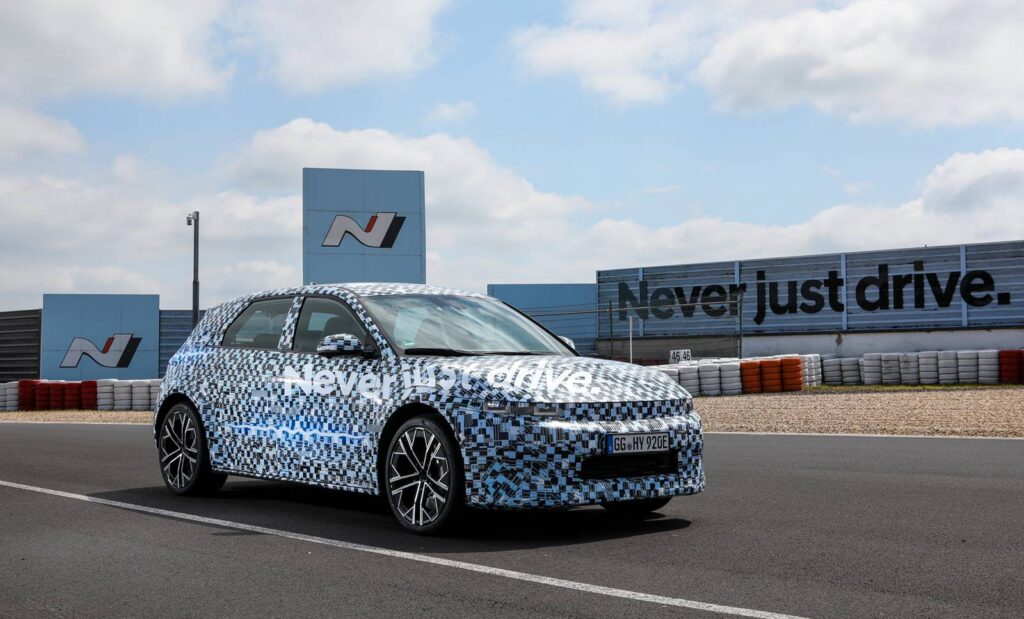
Maximizing endurance in racetrack conditions
Key to extracting more performance from the IONIQ 5 for the N version is heat management, which is more demanding that for cars with combustion engines (ICE) . Besides advanced software implementation, the IONIQ 5 N’s heat management through cooling is given particular care with an enlarged cooling, enhanced motor oil cooler and battery chiller.
N Battery Preconditioning pre-sets the temperature of the battery cells to their most power efficient temperature. The battery preconditioning function is split into two modes – ‘Drag’ mode and ‘Track’ mode to accompany different performance driving scenarios. In ‘Drag’ mode, the optimum temperature is set for immediate use of maximum power, while in ‘Track’ mode, the lowest possible battery temperature is optimized for increased number of laps.
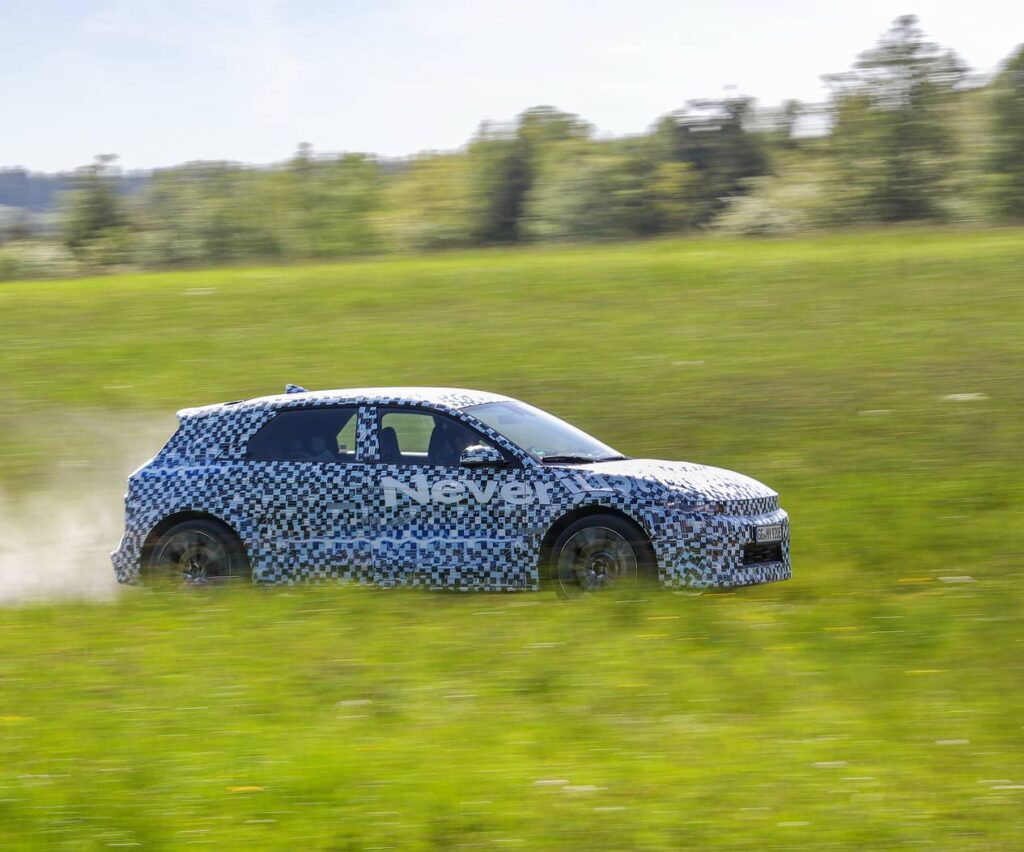
N Race gives drivers more direct control on the car’s energy usage, prioritizing ‘Sprint’ or ‘Endurance’ driving. ‘Sprint’ is the default state of IONIQ 5 N prioritizing full power on demand for the driver. ‘Endurance’ is a setting that maximizes IONIQ 5 N’s range on the racetrack. This is achieved by limiting sudden power spikes that slows temperature build-up and increases endurance.
N Battery Preconditioning and N Race are a direct result of the N brand’s motorsport-derived approach. This helps drivers to strategize energy consumption in order to maximize performance or longevity. While this type of setting change would normally require a team of mechanics and equipment, the IONIQ 5 N offers it at the convenience of a few button presses.
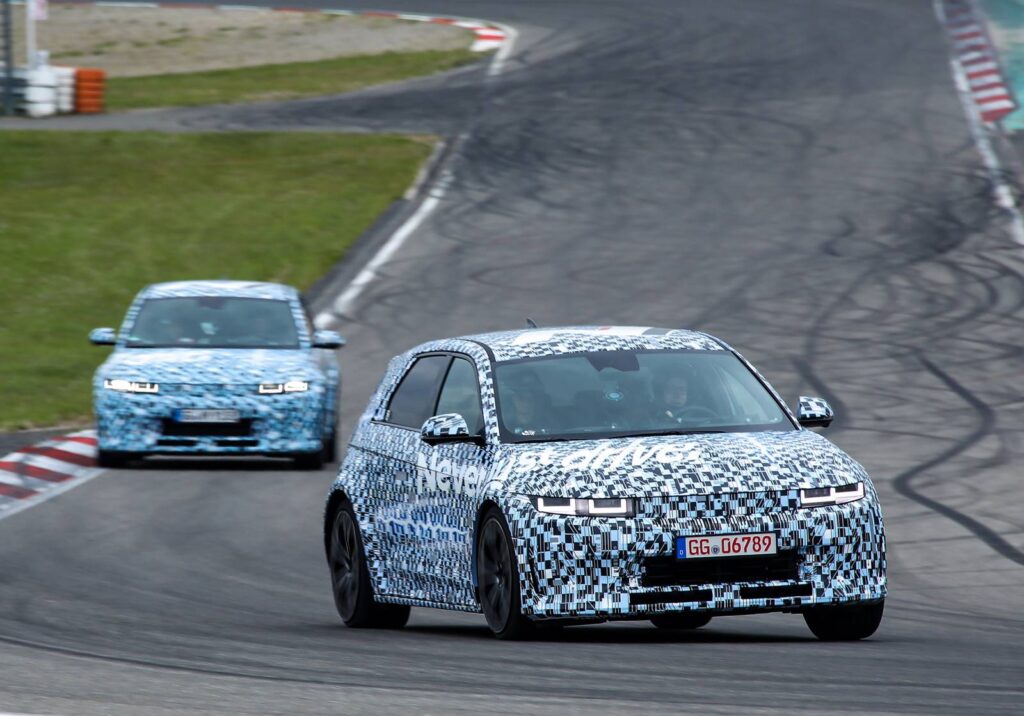
Powerful regenerative braking
Regenerative braking from the motors provide primary braking force with hydraulic brakes providing additional braking force if necessary. Hyundai N engineers have designed a unique regenerative braking system for IONIQ 5 N which can reach a maximum of 0.6g decelerative force — an industry leading figure — through regenerative braking alone. Regenerative braking remains engaged even under ABS activation with a maximum of 0.2g decelerative force.
The car’s hydraulic brakes are enhanced with larger 400 mm diameter discs, featuring new lightweight material and optimized airflow for cooling. They reduced dependency on disc brakes increases the longevity compared to ICE vehicles. The seamless blending between the regenerative and hydraulic brakes creates an imperceptible transition to the driver.
N Active Sound
High performance drivers have long been used to obtaining feedback of the car’s performance not only from physical sensations but also sound. This is something that has changed for electric motors and Hyundai N engineers have developed N Active Sound + and N e-Shift in order to deliver greater driver feedback to allow more precise driver control of the vehicle’s dynamic handling.
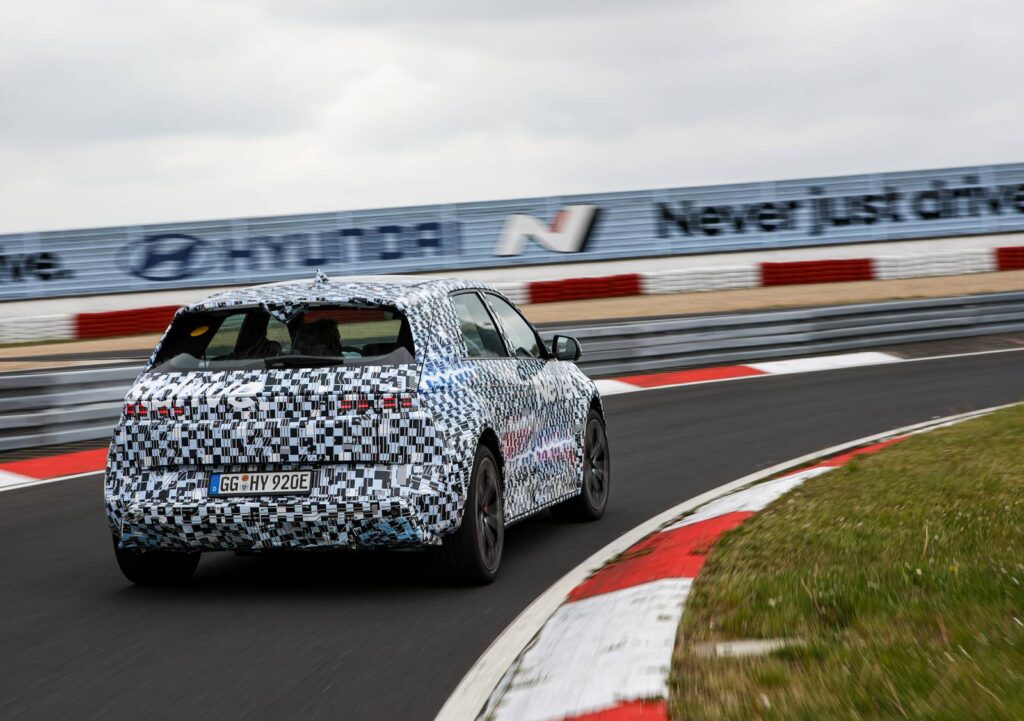
N Active Sound + consists of a 10-speaker system (eight internal, two external) that provides 3 different sound themes available for drivers: Ignition, Evolution and Supersonic. Ignition simulates the turbocharged engine of ICE N cars complete with pop and bang sound effects while Evolution is a N signature electronic sound inspired by the N 2025 Vision Gran Turismo Concept and RN22e. Supersonic simulates a fighter jet to give the drivers the sensation of a fighter pilot. All sound options are customizable for drivers to uniquely tailor to their preference.
N e-Shift works closely with N Active Sound + to simulate the 8-speed dual-clutch transmission (DCT) of ICE N cars. N e-Shift simulates a gearshift by controlling motor torque output and simulates the jolt feeling between shifts. The goal is to allow drivers to seamlessly utilize driving techniques they are familiar with in ICE cars for a more immersive driving experience that feels closer to ICEs than EVs.
